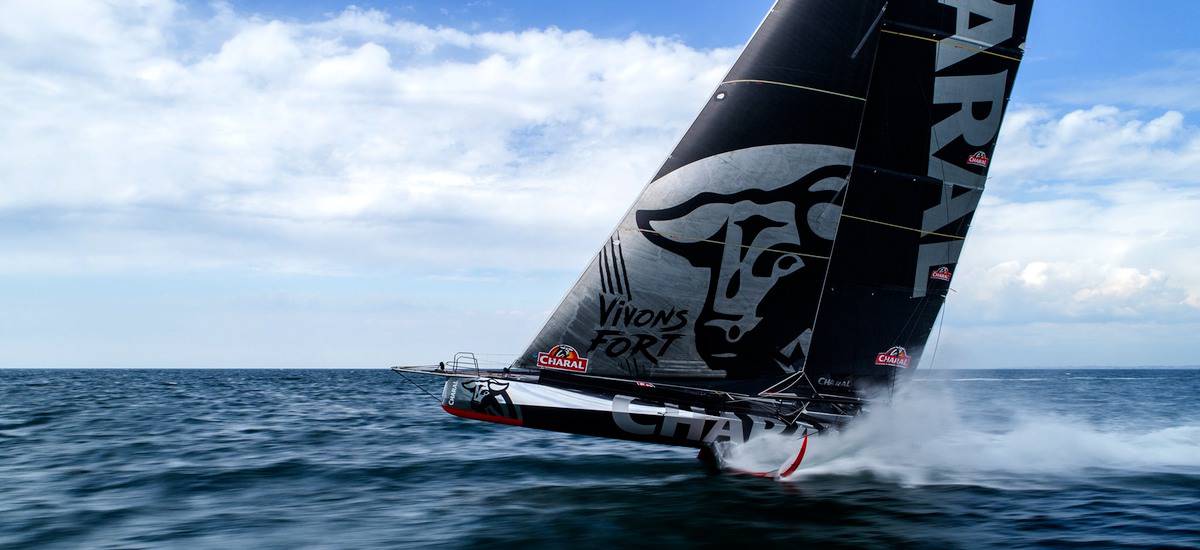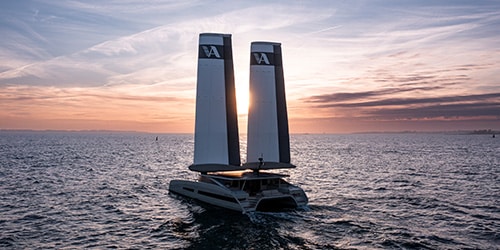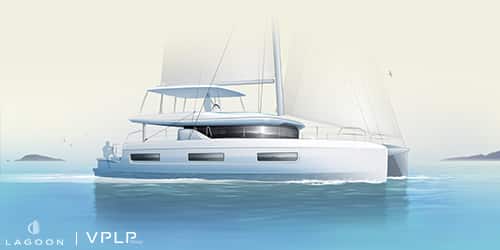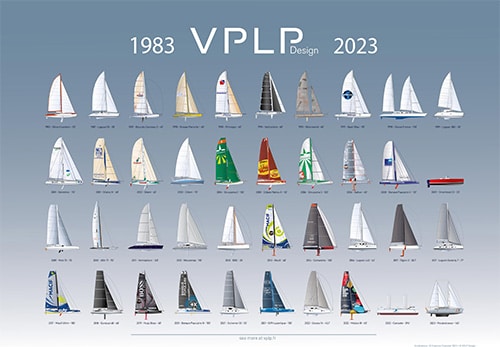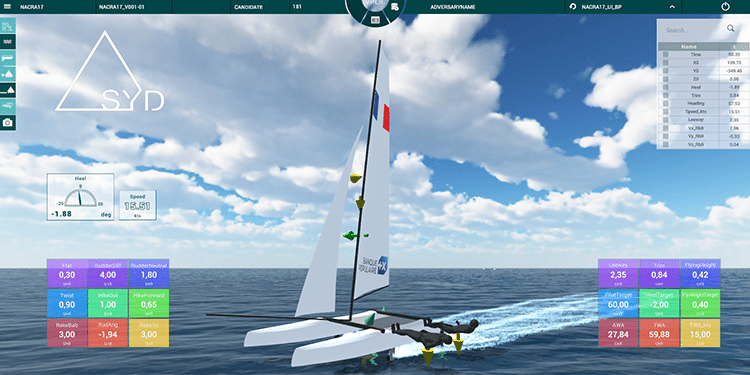The Vendée Globe is always a special moment for VPLP Design, especially since the firm’s designs, in collaboration with Guillaume Verdier, won the last two solo round-the-world races. In the run-up to the tenth edition of the race, starting 8 November, Quentin Lucet and Vincent Lauriot-Prévost discuss the changes and innovations in the design of IMOCAs which have occurred in the last four years – a very long time in the relentless pace of this legendary race.
The advent of competing designs
Of the seven new boats built specifically for the previous edition of the Vendée Globe, six were designed by the architectural partnership of VPLP Design and Guillaume Verdier. This time round, the eight “2020 generation” boats taking the starting line on 8 November were designed by four naval architects: VPLP Design (3), Juan Kouyoumdjian (2), Guillaume Verdier (2) and Sam Manuard (1). And it’s a rivalry that changes everything, according to Vincent Lauriot-Prévost: “The challenge has taken on a new dimension. Previously, we had to do the best we could; this year we’re having to do better than the others. The choices we’ve made are going to be vulnerable to criticism, which is exciting but much less comfortable!”
Bolder choices
Consequently, designers have had to stick their necks out! “We knew nothing about what the other teams were doing when we started working on Charal and Hugo Boss,” recalls Vincent Lauriot-Prévost. “We had to take some risks, otherwise the pitfall would have been to design an average boat and we could not allow that to happen.” According to Quentin Lucet this led to a radical change in the firm’s approach to design: “We stand by our choices. The generations of 2008 and 2012 embodied the quest for lightness and power; while the foilers of 2016 sought a compromise in that they could always rely on the keel if the foils failed. All the hulls we’re fielding in 2020 only work with foils.” In other words, the desire to reduce drag has replaced the quest for more power. “We weren’t afraid to go for it and, fortunately enough, it’s exactly what the teams of Jérémie Beyou and Alex Thomson wanted.”
Closer to the teams
With just three projects in the VPLP portfolio – Charal, Hugo Boss and DMG Mori (sistership to Charal) – we were able to concentrate all our efforts on this latest Vendée Globe campaign. “Because only half the number of boats were taking the line this time round, we were able to organize more preferential support,” says Quentin Lucet. This facilitated dialogue and created a climate of trust. We were sailing more often with the teams, too… We were aboard Charal again just days before she left for Les Sables d’Olonne. This fostered a certain continuity which was very fruitful.” Adrien Letourneur, VPLP egineer in charge of performance for the Jérémie Beyou project was “working almost full-time for Charal”, says Vincent Lauriot-Prévost, “which only happens very rarely.”
Ever greater technical prowess and performance
This new way of interacting with the teams was all the more necessary because the boats really needed it. “The teams were more demanding and their design offices were expanding,” says Quentin Lucet. “Between 2005 and 2016 the time spent on architectural design and the structure increased fivefold. And for this particular Vendée Globe, it grew another 50%! As for the design studies, they doubled in duration compared to the previous campaign, from three to six months.” As a result the surge in performance is expected to be greater than the usual advances made from one Vendée Globe to the next. “We’ve stepped up a gear,” says Vincent Lauriot-Prévost. “Compared to the 2020 generation, the foils of 2016 were matchsticks!” Quentin Lucet calculates the performance gains of the new foilers between 70° and 100° off true wind to be “between 20% and 30% compared to their predecessors”.
Very powerful new tools
Each Vendée Globe campaign sees the development of new tools. “Progress has been relentless over the last twelve years,” says Vincent Lauriot-Prévost. “What’s new for VPLP Design is that we’re now developing these tools in-house with support from Gurit for the structural calculations. We’ve got all the specialists in the same room, and this increases our responsiveness and flexibility to a considerable extent.” Now with its very own simulator (SYD), an extremely accurate velocity prediction program (VPP) and increased calculating capacities, the firm is now equipped to delve much deeper into the details. “Today, we can study in much greater detail how a given foil design works because we know how to calculate its distortion – its twist – and the attendant changes to its angle of attack,” explains Quentin Lucet. The same goes for optimizing existing boats: “Thanks to the simulator we have a much clearer idea of how our proposed improvements are going to work. Performance gains and dynamic behaviours are markedly better quantified than previously.” MACSF (formerly Safran and Queguiner) and SeaExplorer Yacht Club de Monaco (formerly Edmond de Rothschild) have all directly benefited from these powerful new tools during recent extensive optimizations, in particular the addition of new foils.
Skippers continue to play a predominant role
Despite the sustained advances in the design and construction of the boats, the skipper’s role continues to be an essential performance parameter, perhaps more than ever on this Vendée Globe. Vincent Lauriot-Prévost: “The race is going to lay bare the skippers’ capacity to exploit their boats. The number of parameters they need to master in order to arrive at a good compromise in terms of trim and performance is just enormous. We’ve arrived at such a level of complexity that the experience gained from the time spent sailing prior to the race will be even more decisive than before.” What will be the operating percentage of these ever more demanding boats? “I think we’ll see close to 100%,” says Vincent Lauriot-Prévost, “because the skippers have never been better.” Quentin Lucet is betting they will shave two to four days off the time recorded by Armel Le Cléac’h in 2016–17 (74 days 3 hours 35 minutes and 46 seconds). “The VPP are giving a race time of 65 to 70 days with the maximum run in the polar seas,” he says. “But we’re always more surprised by the performances of the skippers in the real world rather than in our simulations!”
